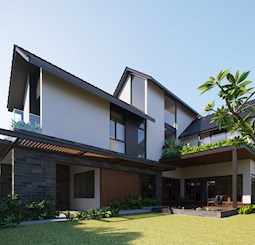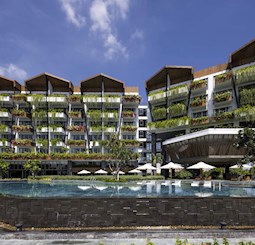Fire resistance: Classification of building materials & products

In case of fire, protecting the lives of people is the most important. All occupants of the building should have the opportunity to evacuate on time, and the time available depends largely on the materials chosen and their behaviour during the fire exposure.
In order to facilitate and optimise this process, the European Union has adopted the Standard EN 13501, introduced in the 2000s, which species a series of classes that determines the anti-fire properties of different materials. Their classifications are unified and compared based on the same test methods, and are currently used as a reference in many countries around the world.
Below are reactions and fire resistance for the classification of constructive materials and products.
Reaction to Fire
Materials and products can be classifies into 07 different Euroclasses according to the way they react to fire. To understand this classification, it is important to consider the generalized sudden combustion or flashover, which is the moment when combustible materials what were not involved in the original fire begin to burn, increasing the temperature in the room and increasing its speed of propagation.
A1 Little fuel and very low contribution to the fire, without causing flashover. Among them we can find materials and products similar to the Euroclass A1, but with a small percentage of organic components.

A2 Little fuel and very low contribution to the fire, but they cause flashover. Among them we can find materials and products such as gypsum boards and some woods with fire protection.

B Little fuel and very low contribution to the fire, but they cause flashover. Among them we can find materials and products such as gypsum boards and some woods with fire protection.

C Fuel, causes flashover at 10 minutes. Among them we can find materials and products such as phenolic foam, or gypsum boards with thicker surface coatings.

D Fuel, causes flashover before 10 minutes. Among them we can find materials and wood products without protection, varying their reaction according to their thickness and density.

E Fuel, causes flashover before 2 minutes. Among them we can find materials and products such as low density fibreboard, or plastic composite insulation systems.

F Indeterminate behavior. Materials and products not tested.

S
Smoke Opacity. The ability of the element to not produce fumes. It's divided into:
- S1: Low opacity and smoke production.
- S2: Medium opacity and smoke production.
- S3: High opacity and smoke production.
D
Flaming Droplets/Particles. The element's ability to produce neither droplets nor inflamed particles. It's divided into:
- D0: Produces drops or particles.
- D1: Produces drops and/or non-inflamed particles.
- D2: Produces drops and/or inflamed particles.
Fire Resistance
Each constructive element behaves differently when coming into contact with fire, and its resistance is measured based on the following parameters (or their combinations). This classification is usually accompanied by a number (in minutes: 15, 30, 45, 60, 90, 120, 180, 240 or 360) that indicates the time in which these parameters are met. [2] By way of example, an REI 90 indicates that a constructive element maintains its stability (R), integrity (E) and its thermal insulation (I) for 90 minutes.

R Supporting Capacity. Capacity of the constructive element to resist mechanically, without losing its structural properties. Although performance criteria vary according to the constructive solution and the loads they receive - axial (such as walls or pillars) or in flexion (as floors or beams) - in both cases their deformation rate and maximum deformation are measured.
E Integrity. Capacity of the construction element to prevent the passage of fire and hot gases into an area not affected by the fire.
I Isolation. Capacity of the constructive element to prevent the temperature increase in the face not directly exposed to the fire.
W - M - C - K
Other important parameters to consider:
W (radiation) The ability of the element to prevent the transmission of fire to an unaffected room, due to excess heat radiated through the element.
M (Mechanical action) The ability of the element to resist the impact due to the structural failure of another nearby element.
C (Automatic Closing) Capacity of doors and windows to close completely without human intervention.
K (Protection against fires of coatings) The ability of wall and ceiling coatings to provide protection to the components behind them.
Source: ArchDaily
--------------------------------------
AVA architects - Design & Build - Contact now for consultancy
![]() Hotline: 0988 088 411 (Mr. Vu) / 0906 4747 58 (Mr. Lam)
Hotline: 0988 088 411 (Mr. Vu) / 0906 4747 58 (Mr. Lam)
![]() Address: 29 Nguyen Son Tra St, Hoa CUong Bac Ward, Hai Chau Dist, Da Nang
Address: 29 Nguyen Son Tra St, Hoa CUong Bac Ward, Hai Chau Dist, Da Nang
Other news
Hot summer is coming, do you want to cool down the summer heat by changing and refreshing your...
Interior design does not have standards, design trends are always changing and evolving. Therefore,...
Located in Hoi An, 6.1 km from the Assembly Hall of Chaozhou Chinese Congregation, with 4 sides...
As parents, we always want to give all the best to our children, and hope that they have good health...
In each apartment or house, there will be many rooms with different functions from the living room,...





